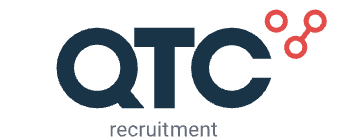Written by manon - 4 Minutes reading time
6 Key steps to include in the diversity recruitment process

Skill has no limits and boundaries. The same applies to talent. Both of these are the top two domains that you as a company should assess potential candidates –apart from the basic academic qualifications. Now, if your company approaches the hiring process in an overly specific manner, it creates unnecessary boundaries. Thus, making the process all the more difficult and keeping your company from availing of the diversity of skills and talents out there in the market.
Some argue against this, claiming that a specific approach towards the hiring process makes it easier for them to lay out a pathway to the ideal candidate. Perhaps it may take time to find this ideal candidate, but once done, they could prove of great value to the team.
It may be true to some extent. But we must not forget that business needs and trends change all the time. You cannot create a concrete strategy and dedicate all your time and effort to that. Instead, you need to be flexible, open to changes, and make decisions as quickly as possible.
The Basics
Let’s explore the process and methodology of the diversity hiring process. By definition, diversity hiring refers to the recruitment of team members and employees irrespective of any details that do not concern the job. It aims to hire candidates solely based on merit and particularly avoids any favoritism or ignorance based on race, gender, personal characteristics, religion, gender, etc.
According to the surveys conducted by McKinsey, teams with gender diversity on their executive teams had 21 percent chances of generating better profits. Along the same lines, ethnic & cultural diversity in teams promised a 33 percent increase in profitability.
1. Craft an All-embracing Job Post
Your job post determines the fate of your hiring process. Yes, that small description that you write for the role determines who will stop to apply for the opening, and who will scroll past the job post. Hence, you need to pay great attention to its formulation. You may be including language that inadvertently excludes qualified applicants. Rule number one when crafting a job post is to prioritize and list your most important goals. Include only necessary prerequisites and expectations. Keep in mind that a great candidate can be trained, and a specific degree or certification may not be necessary.
2. Reach Out to Diverse Pipelines of Skills & Talent
Next, ensure that you take your all-embracing job post to all meaningful and potential platforms. Advertise using job boards, social media platforms or print media, whichever suits your industry best. The key is to determine which amongst all these hold the most relevancy for your industry or domain and where your candidates are likely to visit.
3. Diverse Candidate Screening
Two ways of eradicating biased candidate screening are conducting a blind hiring process or conducting a pre-hiring assessment. Blind hiring involves blurring out the specifics, such as name, age, etc. Remove bias by focusing on hiring solely based on capabilities. The pre-hiring assessment allows you to rank candidates without bias and increases accessibility to more diverse candidates.
4. Check your Company Culture
How’s your reputation? Are you marketing your company as an inclusive place to work? Look at your website, your social media, and how you portray your company culture. Also, check for incorrect data by searching your company online, and remove negative search results that damage your online reputation.
5. Intelligent Shortlisting
When you have an abundance of resumes waiting for review, do not settle for manual checking. Repeat, do not do that. It will not only waste heaps of your time but may as well result in inaccurate decisions based on bias.
Instead, I recommend using relevant apps and platforms for ranking applicants as per your basic prerequisites, i.e., a certain skill or academic requirement. This essential step is the one that performs the filtration process of the entire diverse hiring strategy.
6. Continuously Evaluate Your Process and Outcomes
Lastly, your diversity hiring strategy is never final. You will need to continually assess your process based on the outcome. From creating an inviting environment for employees of all backgrounds, making adjustments to your outreach style, to welcoming skills and people of all spheres to your office after critical analysis.
Sure, the process can be intense and demanding, and likely will never be perfect. But look at your achievements and keep pushing toward improvements. A complete analysis for future guidance can help you determine how to broaden or change your approach.
Final Words
Summing up, devising a diverse hiring process may not be difficult at all. However, abiding by it and making the most out of it may take quite a lot of input from your end. Nevertheless, as mentioned earlier, the resulting profits and skyrocketing success will be thoroughly worth it.
Do you need help with devising a diverse recruitment process to generate higher profitability? Feel free to contact us here!
Published on Recruitingdaily.com
Want to stay informed about current Life Science and recruitment news on a regular base? Then register here for free.
